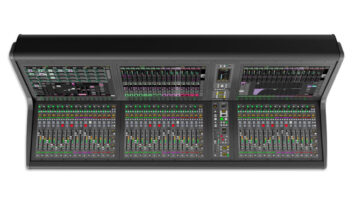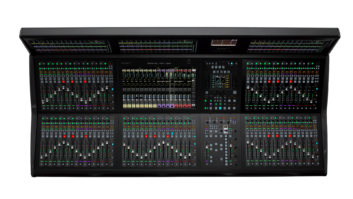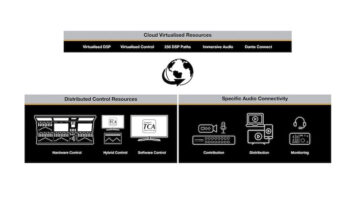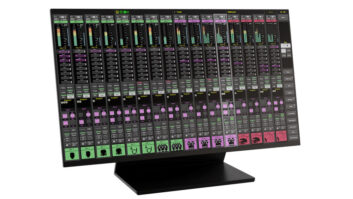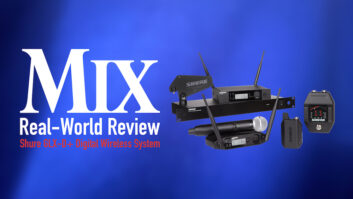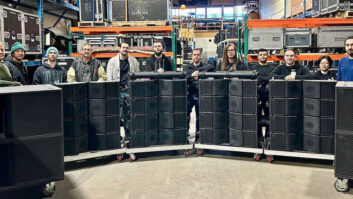A major benefit of any DAW is full reset/recall capability. I wanted to extend that concept to tracking, cue mix and overdub scenarios in addition to the obvious mixing application. This 96-track PARIS system has 120 analog inputs, 72 analog outputs and 60 digital I/Os directly into the DAW with no external console. The CPU is a Kryotech SuperG running a 1GHz Athlon, with more than 1 Terabyte of hard disk on-site in removable trays. Everything and everybody talks straight to the DAW. PARIS allows infinite storing and naming of setups for its virtual patchbay and recalls all settings including +4/-10 dB levels for each analog input. With a little forethought, full reset of any session-excluding analog preamp, EQ and compressor settings-is possible.
Seven Yamaha 01V mixers in conjunction with Frontier Tango 24 A/D & D/A converters make up the cue system. The Tango has Lightpipe in, out and, most importantly, a reclocked thru output, so 16 channels of Lightpipe, originating in PARIS, are fed all the way around the room from Tango to Tango, which are set up in pairs. The 16 analog outs of each pair are fed to an 01V. Opto-isolation means no grounding issues, and the short, balanced analog run from a dedicated 24-bit analog out to each 01V input results in excellent fidelity whether the player monitors via speaker or headphones. I would pit it against any cue system I’ve heard. Using Emagic’s Soundiver, I have complete control and recall of the cue system from the console between PARIS’ patchbay and 01V MIDI control.
The Lightpipe outputs from the Tango’s A/D converters, which are switchable to +4/-10, are used as line inputs to PARIS for keys, samplers or electronic drums. I’ve always been bothered by the way those -10dB, semipro line level devices made their way to the console. Goodbye to cheesy keyboard line mixers and/or direct boxes; say hello to 5 feet of cable to 24-bit A/D nearly anywhere in the room. It does make a difference.
Each of the three player stations in the control room is an open, 8-foot- wide cubbyhole facing the console, treated on all three sides and the ceiling with 3-inch Auralex Studiofoam, looking a bit like the transporter on Star Trek. Tannoy near-fields on adjustable arms attached to rails on the ceiling can be positioned for proper stereo image while being relatively close to the player. Putting the near-fields close to the players provides them with an in-your-face playing experience, while reducing the overall levels in the control room.
The console was custom-built by Todd Beeton of Studio Supply & Construction to house the four Sony 24-inch Trinitron monitors and 96 faders on six C-16 controllers dedicated to PARIS, as well as the 18-inch flat panels used by the ancillary computers. Three additional computers handle Gigasampler, Acid, Logic Audio, Soundiver and various other softsynths. All are Lightpiped directly into PARIS: 64 channels in all. There are other variations from the norm that we’ve incorporated, but the final musical result is what matters. We feel a bit more creative and have a bit more fun making music this way.

